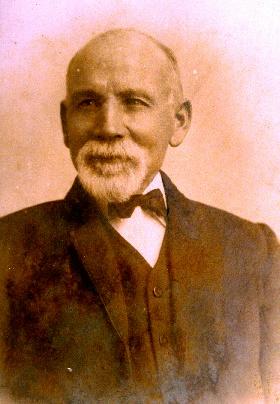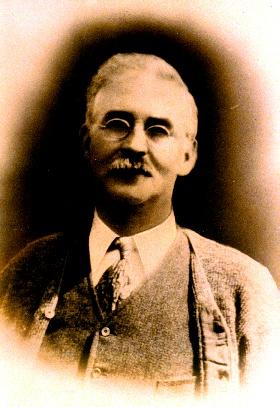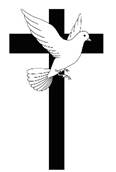The History of the Origins of Bethel Chapel
This short history of the founding of Bethel Chapel is taken mostly from the detailed manuscript of Wesley Perrins, who was a local MP, lifelong member of the Chapel, and a descendant of Amos Perrins, one of the founders of Bethel.
To appreciate the history of Bethel we have to understand the context in which it began, soil in which it is rooted.




Albert Perks, Alfred Wooldridge, Amos Perrins and Charles Dickens “who with others in 1891 made a venture of faith and founded this church, serving it thereafter with zeal and fidelity until their lives end.”
Lye Town began in 17th Century, owning it’s origins to Romany Squatters who settled in Lye Waste, Waste Bank, Gin Cridden, The Dock and Careless Green. As the subsoil of the area was natural clay, the houses were made of mud mixed with straw and stubble. An inhospitable place, it was not unknown for strangers to be stoned! The daughter of Rev. James Bromley, Vicar to the Parish (1845-1865) described the 5,000 inhabitants as almost savages!
Whilst spiritual provision was made for the inhabitants of Lye as early as 1790, when the Unitarian Church, led by the Rev Scott, tried to make an impact on the inhabitants, they remained hostile despite his best efforts. One of the disruptive tactics the locals employed was to block the chimney of his church with grass turves, thus filling the church with smoke and disrupting the worshippers.
Perhaps the first notable spiritual stirrings of the people of Lye was probably about 1880, when the Salvation Army marched into Lye under the command of Captain Wood. Wesley Perrins suggests it was the sight and sound of the Army marching to the martial strains of the band with colourful flags unfurled, which caught the imagination of the people. Captain Wood attracted large crowds and many were converted, amongst them were Charles Dickens, Amos Perrins and Harry Hill.
As was customary, Captain Wood moved on after six months. His successor and son-in-law did not meet with everyone’s approval, thus the seeds of disquiet were sown in the hearts of some.
At about the same time, a National Newspaper carried an advert from a Colonel Spratt, a retired wealthy army captain, anxious to undertake religious work among the poor. Mr. Joseph Heathcock of what is now Perrins Lane, replied and following some correspondence met Colonel Spratt at Stourbridge Junction Station.
Colonel Spratt rented and decorated a warehouse in Talbot Street which he opened for services It was a success and the congregation was soon joined by the malcontents from the Salvation Army including Amos Perrins, Charles Dickens and Harry Hill. The mission went from strength to strength and very soon The Gospel Hall was built in Hill Street in order to accommodate the growing congregation. Colonel Spratt would loan out blankets for the poor in winter on the undertaking that they would be returned in the spring, assisted young couples with articles of furniture and gave food to the sick. He opened a library, held mid-week services, began a Bible class and crucially, provided a fire and lamplight in the evenings as well as Bibles, so that those who wished to, could go and improve their reading skills and study what their faith meant to them.
This community was divided when Colonel Spratt came increasingly under the influence of the Plymouth Brethren from Stourbridge, who began to attend the services. Some of the congregation could not accept the doctrines of what was increasingly being propounded and the installation of a baptistry! The final split came one Sunday evening in 1888 when some of the congregation felt they detected Calvinism in Colonel Spratt’s preaching (Calvinism being the doctrine that some people were elect and destined for heaven regardless of how they behave) when he implied that only certain persons in the congregation were qualified to offer views.
It must have been a very moving scene when the dissenters got up and sang a hymn together at the vestry door before leaving. Thus Bethel Society began, as Alfred Wooldridge, later to become their leader said, “well friends we are now as sheep without a shepherd”. They were, however, a flock who believed that salvation was open to all, Jew, gentile, man, woman, rich, poor.
A new meeting place was established in Crosswalks Road in the kitchen of the home of Mr & Mrs Dickens, Wesley suggests: “The odour of the joint for Sunday dinner spinning on the jack rose like a sacrifice of biblical times and produced a sweet savour before the Lord”.
Bethel Society printed membership cards for its members and continued to flourish. Colonel Spratt’s church began to fail. Contact of some sort was maintained between Bethel and Colonel Spratt because the minutes of 1895 show he was invited to address an Anniversary Service.
The initial organisation of the Society was to form sub-committees to deal with different things, eventually they amalgamated into the elected committee.
In 1890 two houses on the corner of Pump Street and Talbot Street were purchased from a Mrs Phillips, daughter of Thomas Perrins, for the sum of £74. Mrs Phillips agreed to wait for her money - if the venture failed, she would release the trustees from their obligations. The loan was repaid in 1896.
In order to appreciate the achievement of the first Bethelites, it must be remembered people often worked from 6am to 9pm, there was no welfare state and the average wage was 15 shillings or 75p per week. Enlisting the advice of a local builder, these men and women got to work and converted the new premises with their own hands as they could afford the materials, aided they said by prayer. No stone was left unturned and no person uncanvassed for ‘money to build the kingdom’.
7am, Sunday 18th May saw the first service in the new building.
The society continued to grow, more space was needed yet again and Bethel members looked for divine help which came from an unexpected quarter. Halesowen District Council had it drawn to their attention by the representation of Lye that the land in front of the Chapel on the corner of Pump Street jutted out and was dangerous. Consequently Bethel agreed to sell the land for £150 on condition that the Society was not disturbed until new premises were found.
It was decided that the trustees elected to manage the Pump Street purchase would negotiate for any new land purchased. The legalities required that a new trust deed be drawn up and so the members wondered what to insert as their statement of faith. It was decided that they would simply enter that Bethel Chapel were a group ‘who refused to be designated’.
Eventually land in Hill Street was purchased. At that time Lye was being re-developed with factories being built all around Fletcher Street and Hill Street the members had the foresight to buy more land than was strictly needed to build the Chapel so that the noise of the factories would not encroach on the members weekday worship. By persuading the public to donate, members to loan mortgages and other members giving all they could, including one William Westward who gave £5 he raised against the deeds of his cottage, the members set about raising the money needed.
On 2 April 1900 the new Chapel opened. The lesson was Acts 4:19-21. ’for we cannot but speak of what we have of what we have seen and heard.’ The event was recorded at length by the County Express. The final cost was £600 and Mr Alfred Wooldridge, addressing the congregation, admitted that they had encountered many difficulties but they had surmounted them, having raised £350 they were still £250 in debt. It must have been a burden to these men ‘who had received the truth and felt constrained to give utterance to the faith that was in them’ (County Express 7 April 1900).
A tea for 200 followed, provided by the ladies of the congregation. The evening service was led by Rev. G E Rodman, who prayed that the Holy Spirit present at Bethel’s “housewarming” would add a glow to the many meetings to follow. God’s blessing was asked for, to an accompaniment of cheers.
A fact the County Express omitted to mention was that the varnish on the benches was still wet at the afternoon service and as the congregation rose, many found they were adhered to the bench! Rumour has it compensation was paid!
In 1919, plans were drawn for a brick Founders Hall but were abandoned due to cost. Instead, members accepted the offer of an army hut kindly transported to Bethel by Eveson’s Works. “The Hut” was the affectionate name by which the ex army barracks was known until its demolition in 2001. 1926 saw fund-raising to provide heaters for the tin hut, which accommodated up to 180 young scholars every Sunday. 1933 heralded the installation of electric lights. In 1937 the committee decided to install Choir Stalls and Pulpit in front of the organ to compliment the new arch and give “a pleasing effect” for the new organ installed in 1938. Old newsletters and local people’s anecdotes show that Bethel was a very lively place as the Tennis Cup bears witness and people still speak of the Bethel dances! Committee notes of 1939 record members approved the purchase of 50 yards of black material to make blackout curtains. Both wars saw many of Bethel’s young men called to service. After the second world war, when young people got married there were no new homes in Lye and many were forced to move out of the area, thus a slow decline in membership ensued.
During the 1980’s, membership began to grow to the church we know today. In 1990 the Committee appointed Bethel’s first ever Pastor, Jill Berry. 1991 saw the opening of the new extension including a new kitchen and toilets after several years of fund-raising.
2002 saw the opening of the purpose-built brick building with four rooms and storage space which replaced the hut that had been home to so many outreach activities for so many years. The new facilities helped provide a much better and welcoming environment for the ever-growing number of community activities offered by Bethel. Currently on offer is the Little Acorns carer & toddler group, Little Lambs Pre-School Centre, One Way children’s club, Friday Night Icebreakers and Cornerstone senior citizens luncheon club. In addition the facilities are used by other groups, such as Knit & Natter, Crafternoon, Cancer Peer Support Group, Widows Oil widows support group and Feel Good Friday social afternoon, all of which Bethel is delighted to welcome.
In recent years the outside of the chapel had shown signs of its age, therefore a phased programme of restoration was undertaken. Comprehensive work was carried out upon all the façades of the building in the 2010's.
The word Bethel is Hebrew for House of God, and the Christians who call themselves ‘the church that meets at Bethel’ continue to worship, work and witness so that the Good News of Jesus can be constantly on offer to the community it serves.
Perhaps the thing that stands out most about the founders of Bethel is that they were men and women of God who practised as well as professed their Christian faith. They were not professional people but as the trust deeds show, they were nail makers, a rag and bone man, a brickyard labourer. These ordinary, humble people shared a vision. They did not turn back when they met an obstacle on their path, but with prayer and united in their purpose to share the hope the Christian offers with the people of Lye, they surmounted it. They continued their walk with God all the days of their life, inspiring and impressing all those they met on their way.
Compiled from Bethel’s archives and Wesley Perrins’ manuscript by Val Woodhouse
